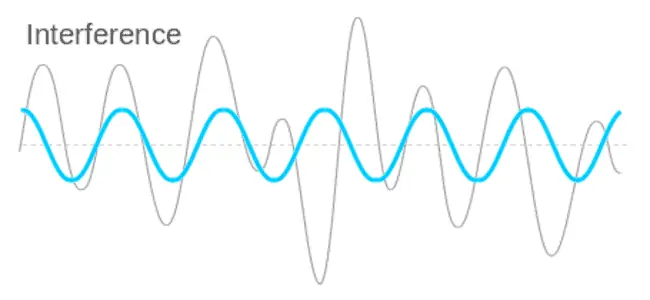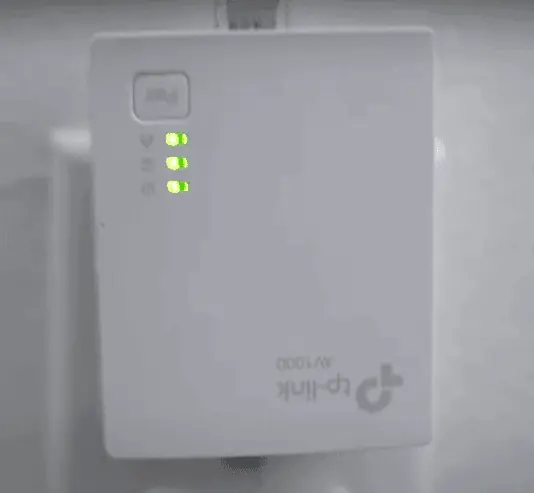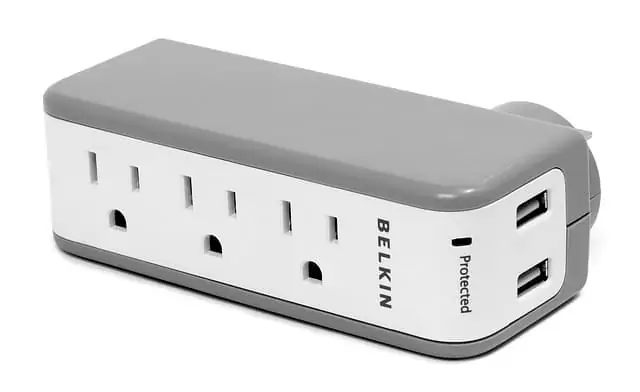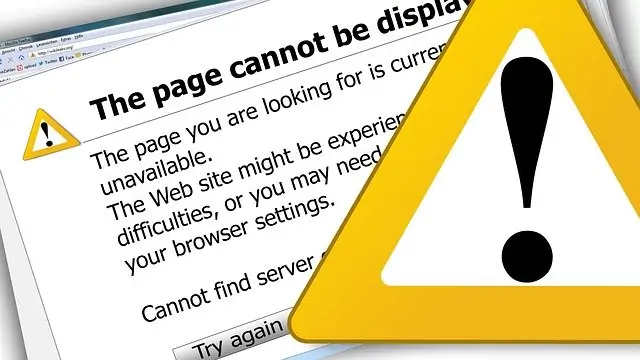Powerline adapters are great tools to expand internet connections to all parts of a house, but like most other networking equipment they are prone to suffer problems and either stop working or deliver reduced performance at times. What steps can we take to troubleshoot and get them working again?
We have tried here to put together a definitive troubleshooting guide listing all the different things you can test to narrow down what exactly the issue is for a powerline adapter not working.
If we systematically test all different factors in order, such as our internet connection and hardware in general, our adapters, our house circuitry and other factors like interference, it is usually possible to pinpoint what the cause is of a powerline adapter not working.
Here are some quick troubleshooting steps:
- Check all 3 LEDs are lit on the adapters.
- Check the internet is not down in your area.
- Check the wiring in your house is in good condition
- Check all wiring is running off the same meter.
- Make sure all adapters are cross compatible.
- Make sure you are not using them near high energy devices
- Make sure the cables you use are working properly.
- Reset your adapters, router and device.
- Try pairing the adapters next to each other to test out.
- Try the adapters in different outlet and rooms.
- They may or may not work across circuit phases.
We can often find out what the problem is by finding out what it is not. Lets look at all the steps we can take now.

Powerline Adapters can sometimes be susceptible to signal interference from other electrical devices
See also this excellent PDF guide for a summary of when powerline adapters will and will not work.
Test Your Internet and Hardware
Internet and Hardware Quick Checklist:
- Check if your internet is on in your house and wider area in general
- Reset routers and devices by unplugging and plugging back in
- Try full factory reset on router if desired
- Try plugging device directly into router with ethernet cable and test connectivity. If you can get a connection this way then the powerlines or circuitry are the problem.
- Also try different ethernet cables to connect adapters and devices
It sounds like an obvious step, but the first thing to do is test the internet in your house as a whole. both on Wi-Fi and wired. If other people are online in the house then you know it is a powerline or device specific problem; if everyone is down then it may be an ISP maintenance or fault issue. It is a good idea to check with neighbors as well to see if they are down, as it may be a wider fault in your area.
There are some useful broadband service checker sites that monitor ISP service status by region in certain countries to let you know if there is a more widespread problem in certain areas. If someone has phone internet then they are worth checking out.
Try resetting your routers and devices to make sure they are not faulty. It may be that your router has developed a fault or broken in which case you will need to get on to your ISP about a replacement.
You can try unplugging your router from the wall for a few minutes and plugging back in for a “soft” reset, or if you like you can do a full factory reset by finding and pressing the reset button on your router with a safety pin or other sharp object.
Be aware this will restore all router setting back to “out the box” factory settings though and wipe out any custom configuration you have done on the router.
Also if your internet is up, try using devices when plugged directly into your router with an ethernet cable, as opposed to through a pair of powerline adapters. If you can get a connection fine this way then it is a sign that it is a powerline adapter or circuitry issue, which we will deal with below.
Test Your Powerline Adapters and Circuitry
Quick Checklist:
- Make sure the adapters are both AV HomePlug certified and therefore inter-compatible. Cross compatibility is pretty good nowadays (all the TP Link models work together), but if you’re using older models, then you may struggle to get them to work. See our article on mixing powerline adapters of different brands.
- Check that all three LED lights on your adapter are on and that the data light is blinking or flashing to indicate data transfer
- If pair light isn’t on then try pairing the adapters next to each other in adjacent sockets
- If successful then try in different rooms and different sockets in the same room until a good connection is found
- Try unplugging for 60 seconds and re-pairing adapters using the pair button.
- Try hard factory reset button if available on the adapter
- If none of these steps are successful then adapters may be broken; check warranty and/or returns policy.
- House circuitry can be complex and old fuse boxes or worn wiring may prevent adapters working. They can work across phases but not on different meters or feeds. Maximum range across copper wiring is 300m.
- Old fuse boxes and worn wiring can also prevent them working
Resetting Powerline Adapters
The next thing to test is the powerline adapters themselves. All powerline adapters have LED lights on the front to tell you what state of connectivity they are in.
They usually have a Power light which is self explanatory, a Network or Ethernet light that tells you there is a connection between the two adapters over the circuitry and also between the adapters and the devices, and a Data light that tells you whether data is actually being transferred between the two adapters.
When working properly all three lights need to be on, with the data light constantly flashing or blinking to indicate successful data transfer.

Powerline adapters have 3 LED lights on the front to indicate power, connectivity between the adapters and successful data transfer
If the first two lights are on fine but the data light is either solidly on or off, then it means the powerlines are connected but no data is being sent over the network.
Whilst this could be an interference issue, it is most likely a problem with your internet or router since the fact the second Network light is on indicates the two adapters have already managed to “pair up” through the wiring; they just aren’t able to transfer data. Make sure your devices are also configured properly and ready to connect to the internet.
If the Network or Ethernet light doesn’t even come on then this is a sign the adapters have not managed to pair and this means it is a problem with either the adapters or your circuitry.
The first thing to do is try and pair the adapters up in two plug sockets right next to each other; the kitchen is a good place to do this as they often have adjacent plug sockets. If you cannot even pair the adapters up this way then it is likely the adapters themselves that are broken or faulty.
In this case the first thing to do is try resetting them by unplugging them for around a minute or so and then plugging them back in. Some adapters also have a factory reset button or pin that you can press or press and hold for 10 seconds to do a hard reset.
Then you can try re-pairing them by plugging them in next to each, pressing and holding the pair button on one adapter until is starts flashing and then pressing and holding the pair button on the other one within 2 minutes to see if they pair up.
If you still cannot get a connection then the adapters are probably broken. Perhaps try in a different pair of adjacent plug sockets just to make sure; otherwise it is worth checking the warranty or returns policy for your adapters to see if a refund is possible.
If you do manage to get them to pair up next to each other then you at least know the adapters are working and it is more of a circuitry issue in the house. Try the adapters in different rooms and different plug sockets within the same room to see if you still get a connection.
House electrical circuitry can sometimes be idiosyncratic and complex and without a map of all the circuits it can be a case of trial and error testing different sockets until you get a connection. With powerline adapters it can literally be that they will not work on some sockets but will work perfectly fine on sockets even within the same room.
Also there are some circumstances in which a powerline adapter will not work regardless of anything you try, like if the electrical wiring is too worn or old or not up to modern standards or codes or if they are in parts of the house on separate meters or feeds (like extensions, annexes or very large houses).
They CAN work across phases (not always) but there may be a drop in throughput each time they pass onto a new phase.
Here is a very quick summary on powerline adapters and circuitry:
- Powerline adapters will not work between separate residences and apartments within the same building that are on separate feeds.
- Powerline adapters may or may not work across different circuit phases within the same house. Most of the time they will, but there are exceptions.
- When they do work across phases, there can sometimes be a drop in speeds each time they cross over to a new phase.
- They will not work when trying to connect two places supplied by separate meters/feeds.
- See our full article on using powerline across different circuits for a very detailed breakdown of this issue.
The issue of circuitry is very complex and differs from house to house, so check the linked article just above if you have any concerns, as it covers the issue in detail.
Distance can also be a factor in powerline networking. They are meant to have a technical range of around 300 meters but remember with house wiring it is not a direct point to point connection but may have to travel along quite a lot of wiring before it reaches the destination if the circuitry is particularly long or complex.
300 meters should be plenty in most cases but under 200 meters and the shorter the better is considered optimal for powerline networking.
Test For Interference and Noise
Quick Checklist:
- Do not use powerline adapters in extension leads, power strips or surge protectors; they are best plugged directly into the wall. If you absolutely have to use a power strip use on the nearest socket to the main plug.
- Avoid using them near high electricity usage devices like washer, dryers and fridges
- They also do not like being close to devices with a switching power supply such as phone and USB chargers and dimmers. They also don’t like devices with an electro-motor.
- Plug any high interference devices (not the adapters) into surge protectors or extension leads if necessary.
- If interference is a concern than a powerline adapter with passthrough is a good option is it should help to filter out noise.
- Some adapter types can interfere with each other if on the same home network, particularly older models; check they are on same HomePlug AV/AV2 standard.

Plugging any high energy use or high interference devices into surge protectors can help limit the amount they interfere with powerline adapters
Interference and noise can be a big issue with powerlines adapters that can either reduce the speeds you get or stop them working altogether. It is usually easy though to find what is causing the most interference and either put some kind of filter in or move the adapter away from the interference.
Powerline adapters work by far the best when plugged directly into a wall outlet; whilst they can sometimes work when plugged into extensions and strips they will not deliver the best performance so it is not recommended. They will probably not work at all with more expensive extensions which have built in filters that will block the signal.
They can also pick up interference from devices that use a lot of power like washers and dryers so keep them away from these appliances if possible. Innocuous looking gadgets like phone and USB chargers can also cause problems for powerline adapters as can anything else with an alternating or switching power supply so try to keep these away from your adapters.
If you plug any device that is causing interference into a surge protector or long extension lead this should help with reducing signal noise for the powerline. Also the newer adapters have got better at filtering out noise anyway and getting a model model with passthrough is a good idea as they have built in noise filters that should prevent any problems.
See our Powerline Adapters page for links to models with a integrated passthrough plug socket feature.
Also different powerline adapter brands can sometimes clash if they are being used on the same home network. Whilst all powerline adapters that meet the same HomePlug AV/AV2 standards should in theory be cross compatible, they may not always play nicely with each other, and if you have different brands on the same or different networks on the same wiring then they may clash and reduce performance.
In fairness though this more concerns the old adapters that were on the HomePlug 1.0 standard, which are quite rare now. The more modern the adapters, the more likely they are to work together even across brands, so this situation is unlikely nowadays, but we put it out there as another thing to look out for if you have trouble with powerline networks. See our full article on mixing powerline adapters.
